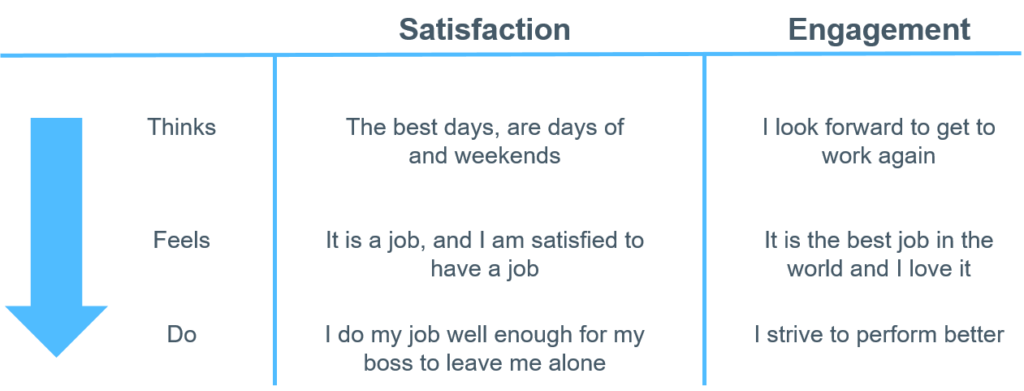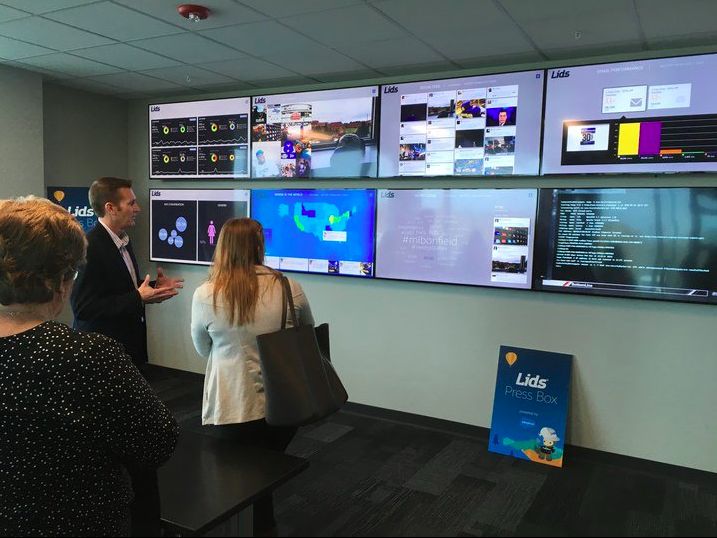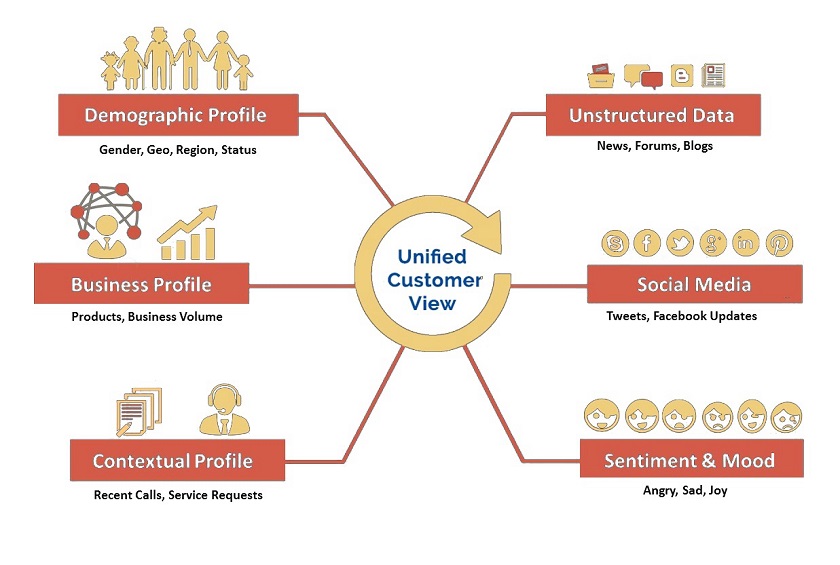In the customer service industry, it’s sometimes difficult to differentiate between fact and myth. The industry is evolving so fast that the various players in the market sometimes struggle to keep up. This makes it fertile ground for false notions, fads and toxic myths.
It is important for professionals and business owners to balance these myths with reality in order to serve their customers effectively and also grow profitably.
To help ensure these false notions are not contributing detrimentally to your service delivery, this article is devoted to busting six more common customer service myths.
#1. Satisfaction Automatically Means Loyalty

Here we dissect myths that impact on two aspects of satisfaction: Customer satisfaction and employee satisfaction.
-
1a. All Satisfied Customers Are Loyal.
Wrong, satisfaction is no longer enough. While loyal customers are probably satisfied, it doesn’t mean that all satisfied customers are 100% loyal!
Customer loyalty comes from the dynamics of two factors; Satisfaction “the positive experiences derived from the consumption of your products and services”, and Image “the perception that your brand creates voluntarily (communication, advertising, innovation) and involuntarily (word of mouth, the press, the web, your share price).
To nurture and retain loyal customers, your brand must rank above average on both factors. Merely satisfying customers is no longer enough!
-
1b. Satisfied Employees Will Create Loyal Customers.
This is not entirely true. While studies show that sometimes there is a link between satisfied employees and customer loyalty, in most companies this is not the case. Satisfied employees are likely to assist customers more pleasantly and offer a higher level of customer service, but they should not be confused with engaged employees.
It is important to distinguish between employee satisfaction and employee engagement. An employee can be satisfied with a job and yet remain unengaged.

Employee satisfaction refers to the degree of contentment employees have with the terms & conditions of employment. This does not mean they will not go “above & beyond” their usual efforts. For instance, in the public sector, employees may be satisfied due to the lack of pressure on them; this does not mean they will make the effort to satisfy their customers.
An engaged employee is an employee who is passionate, deeply involved and willing to put in discretionary effort into their work – they are committed to their organizations. It is the engaged employees that contribute to the creation of competitive advantage and customer loyalty.
#2. Social Media Is The Fastest Way To Get Customer Service
Social media is the latest addition to customer support channels and it already changing how brands engage with customers. This does not necessarily make it the fastest way to get support, because the responsiveness of agents will depend directly on the company’s investments in this area.
For instance, if a brand has assigned just one customer service agent to manage its social media channels, and a hundred to answer the phone, customers are going to get faster support by using the voice channel.
Some brands are already investing big time in social media. LIDS built a social media command centre, equipped with eight 55-inch flat-screen TVs that help in monitoring their social traffic and insights. This enables them to respond to customer interaction or industry news right away.

Social media has the potential to be a real-time customer support channel only if a brand is willing to invest and allocate the right resources to make this possible.
#3. Different Channels should Exist As Silos
Silos make it difficult to offer consistent customer experiences across different channels. Today’s customers will reach out to your company through whatever channel is most convenient or comfortable for them and expect that no matter their choice, they will receive the same quality of service.

In order to achieve consistent seamless experience across channels, a uniform omnichannel approach that takes into account the context and history of every customer on each channel should be considered.
Many companies integrate data from their live chat, email and other channels into their customer relationship management (CRM) system to create this unified view of the customer.
This unified view provides deeper insight such as demographics about who the customer is, when the purchase was made, the channel purchased through, and the list goes on. Central access to these insights makes it possible for brands to consistently offer a seamless positive experience to customers across the channels.
#4 Human Agents Will Soon Disappear
Perhaps no human agent will exist in a thousand years…when the robots have taken control of the Earth. However, in the near future, fully automated and human-assisted service will continue to coexist.
In many cases, automated service is sufficient for high-issue resolution rates, but very complex customer requests will require human assistance to be resolved. This means human agents will become more productive as they no longer spend half their day collecting basic information or helping customers who could easily be assisted with AI.

Understanding this and implementing AI with the mindset of assisting human agents, and handing-off seamlessly when necessary is the best way to ensure that customers will have a positive customer support experience with AI in the future.
#5. Customer Service Is A Cost Centre & Never Generates Revenue
This is another sad customer service myth managers struggle with when there is a need for major customer service investments in their organizations. In reality, customer service does offer revenue-generating opportunities.
Ever heard of “up-sell” and cross-sell? Whenever customers interact with customer service and have their issues successfully resolved, it creates revenue opportunity through the recommendation of other products (or services) that can satisfy additional, complementary needs that are unfulfilled by the original product (or service).

In addition, customer service reps can encourage satisfied customers to post positive reviews on social media. This helps in building and promoting a positive brand image, as well as attracting new customers.
Some call centre managers create telemarketing teams as a means to further increase revenue generation. For e-commerce, some sites use special algorithms to determine whether a visitor on the website needs assistance in completing a purchase. The algorithm puts the customer in touch with a support agent, who assists in finalizing the purchase.
#6. No Need To Invest In Customer Service Technology
The reality is different, according to a survey conducted by Wakefield Research of 1,000 consumers in North America. 81% of respondents said they would like and would appreciate being offered smart technology solutions in several scenarios.
It is important to stay well informed of innovative customer service solutions in order to optimize service quality, gain competitive advantage, and retain more customers.
Brands need to invest in the latest innovative Customer Relationship Management (CRM) tools and customer support software. These empower support staff to assist the customers and solve problems more efficiently.
For businesses in the e-commerce space, Magento development or app development companies develop innovative solutions and apps that provide an enhanced customer experience.

Before investing in, or deploying a new customer service solution, you should ensure that the primary users (employees or customers) are involved throughout the development process, testing it and making recommendations before the solution is implemented organization-wide.
Most times, companies expect employees and customers to adapt to technology rather than the opposite. This results in aberrant systems that slow down responses, break individual initiative, and sometimes perform less well than “old” systems.
Smart professionals and entrepreneurs not only avoid buying into common customer service myths, they also understand that customer service is ever evolving, and even current best practices won’t work forever, or in every situation with the customers.
This article was originally published here



